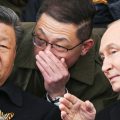The recent escalation of tensions between India and Pakistan has highlighted the increasingly globalized nature of modern warfare. The conflict, marked by missile strikes and aerial bombardments, showcased a fascinating, and concerning, array of weaponry sourced from across the world. Reports suggest a complex mix of military hardware was employed, painting a picture of a regional conflict with far-reaching international implications.
This isn’t just a localized dispute; it’s a demonstration of the interconnectedness of the global arms trade. The involvement of Chinese missiles underscores the growing influence of Beijing in the region’s military landscape, while the use of French fighter jets and Israeli drones reveals the far-reaching reach of these nations’ defense industries. The specific models and capabilities used remain largely undisclosed, adding another layer of complexity to the situation, but the sheer variety of weaponry used is undeniable.
The use of such diverse military technology highlights the sophisticated nature of the conflict and the significant resources invested by all parties involved. This situation carries immense risks, considering the nuclear capabilities of both India and Pakistan. The potential for escalation remains a serious concern, and the international community has a critical role to play in de-escalating the situation and promoting dialogue to prevent further conflict. The implications extend beyond the immediate players, impacting regional stability and global security.
The deployment of advanced weaponry also raises questions about the arms control landscape and the effectiveness of existing international treaties. The free flow of advanced military technology across borders underscores the need for stricter regulations and greater international cooperation to prevent future escalations. This incident serves as a stark reminder of the urgent need for robust arms control measures and diplomatic efforts to prevent further conflict and ensure regional peace and stability.










